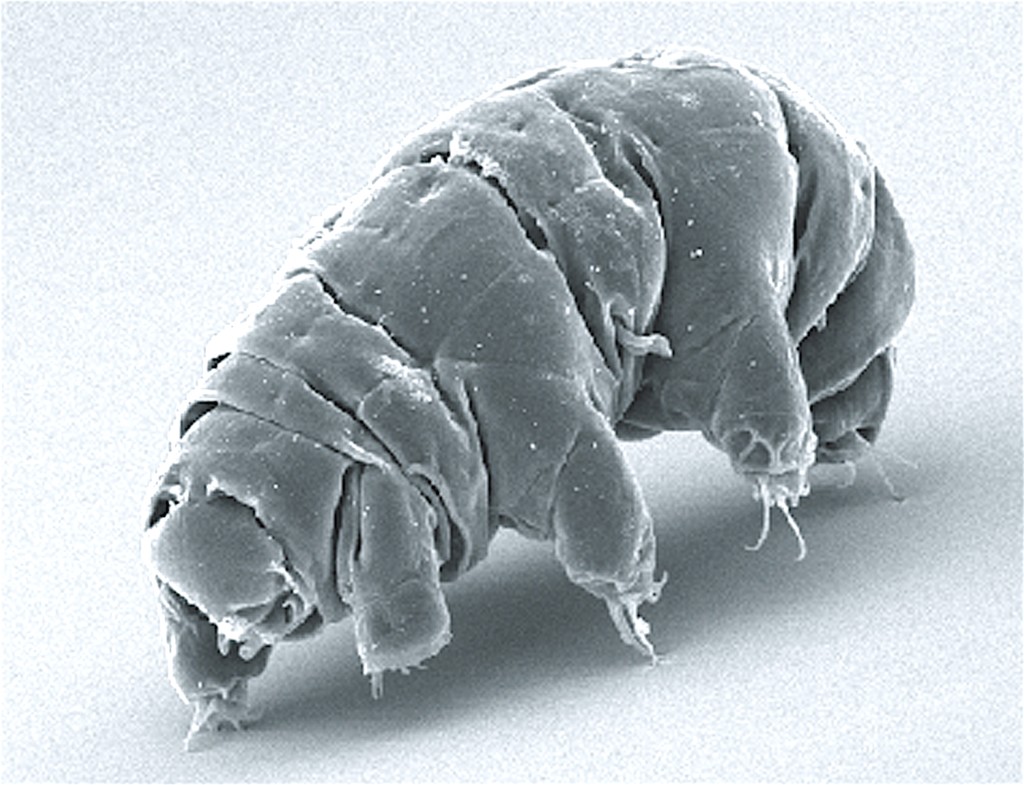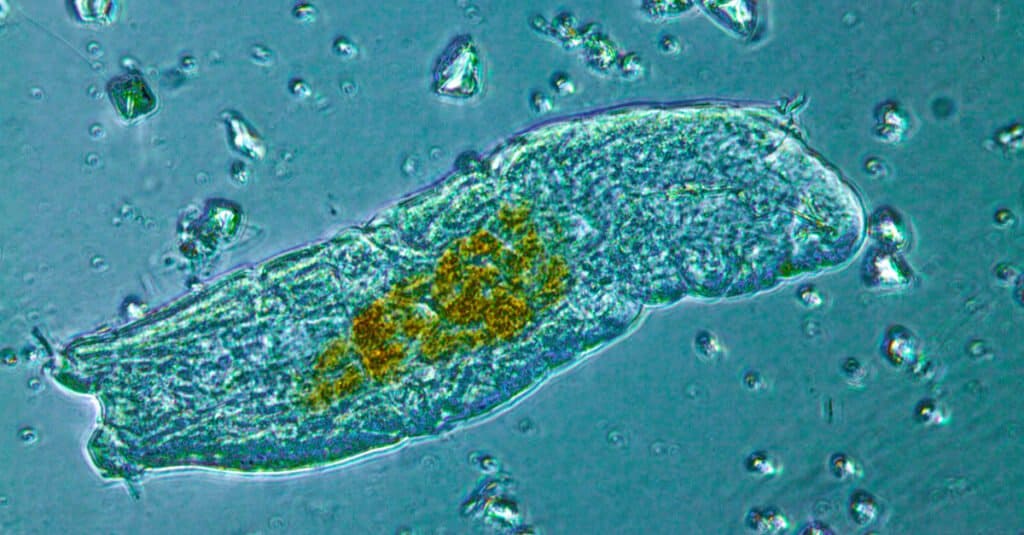You may not have heard of tardigrades before now, but there is a lot to learn about them. This microscopic organism needs to eat, just like the rest of us, and what it eats to survive may surprise you!
So, what do tardigrades eat? Tardigrades eat plant matter, algae, rotifers, and even other tardigrades. Even though they exist at a microscopic level, these animals are capable of consuming things much larger than them.
But do we know how much a tardigrade eats? And how does a microscopic creature manage to eat anything at all? Let’s learn more about this unique animal now.
What Does a Tardigrade Eat?

.
©Schokraie E, Warnken U, Hotz-Wagenblatt A, Grohme MA, Hengherr S, et al. (2012) / CC BY 2.5 – License
A tardigrade eats liquid from plant matter and algae, as well as larger organisms such as rotifers and other tardigrades. Also known as water bears, a tardigrade has a specific diet that it sticks to.
Given that tardigrades have the potential to eat other tardigrades, they can be considered cannibalistic. However, they are more likely to consume fluids from many different types of plants. As tardigrades only live in water, moisture is an important part of their diet.
According to the Illinois Wesleyan University Species Distribution Project, water bears have powerful piercing stylets. These unique stylets allow tardigrades to pierce the flesh of plants or other microorganisms and suck out the interior of these species. But more on that later.
A Complete List of 8 Foods Tardigrades Eat
Tardigrades have been known to eat the following foods:
- Algae
- Moss
- Flowering plants
- Other plant matter
- Bacteria
- Rotifers
- Other tardigrades
- Other microorganisms
Tardigrades have a digestive system, but not a respiratory or circulatory system. They are capable of eating microorganisms and digesting them, but they thrive on liquid substances- this is also where they get their oxygen.
While it happens on such a minute level, tardigrades are well-equipped for traveling in order to reach a meal. According to American Scientist, water bears are equipped with grasping, clawed hands.
These hands are able to grip and grab many varieties of plants and materials. Given that the tardigrade lives in the water, it is important that it is able to move around efficiently.
How Much Does a Tardigrade Eat?
It is unknown how much exactly a tardigrade eats. According to National Geographic, some water bears can go up to 30 years without eating or drinking anything. This is in part due to their ability to enter cryptobiosis.
What exactly is cryptobiosis? This is a special state that very few living creatures can enter, and it is a state that is closely linked to death. Tardigrades enter this state when they are without water, as they need a very thin film of water around them at all times in order to survive.
However, tardigrades enter this state and are capable of surviving just about anything. The American Biology Teacher considers tardigrades a fascinating research study for this reason- among many others.
A tardigrade is unlikely to eat very much, given that it only measures roughly 2 millimeters. There isn’t a lot that this body likely needs, especially if it enters a cryptobiotic state! When a water bear drops its metabolism down to such a rate, it won’t be eating anything.
How Do Tardigrades Eat?

.
©Tobetv/Shutterstock.com
Tardigrades eat with a piercing mouth or stylet. This mouth has microscopic teeth that can grasp onto whatever it is eating in order to suck the liquid out of it. While this doesn’t sound very pleasant, thankfully it happens on a level that is imperceptible to the human eye!
According to Integrative and Comparative Biology, tardigrades have a molting process that takes around ten days to complete. During this time, water bears shed much of their outer shell, including their claws. They are incapable of feeding during this time.
Tardigrades also tend to live where they eat. For example, while water bears are aquatic and can be found in both fresh and saltwater areas throughout the world, they can also live on land so long as they are surrounded by dampness.
This often leads to piles of leaves and moss as popular areas for tardigrades to be found. Even if the moss is growing somewhere on land, the chances of finding a water bear in some damp lichen are high!
Is A Tardigrade Dangerous to Humans?
Tardigrades are not dangerous to humans. In fact, you will likely not ever know that one is near you without the help of a microscope. While many people find water bears to be adorable, some of you may not think this and you may be pleased to hear that a tardigrade is not easily seen.
While tardigrades aren’t dangerous to humans, they are indestructible in many ways. Origins of Life and Evolution of the Biosphere researched tardigrades as beneficial creatures for space flight. Why might this be? Because of their natural ability to use cryptobiosis.
It is a well-known fact that tardigrades can survive just about anything with this unique skill, including drought, nuclear attack, and freezing temperatures. Using tardigrades in various research applications may give us more insight to human survival.
Water bears don’t even have to be in this slowed or nearly dead state in order to be tougher than humans. For example, tardigrades have been known to survive UV exposure, many chemical reactions, and wildly different swings in temperature, all in their normal state of being.
No, tardigrades are far too small to be of any danger or concern to humans. But their inherent ability to survive is something for us to be awed by and curious about. We can learn a lot from a microscopic animal like the water bear!
The photo featured at the top of this post is © Schokraie E, Warnken U, Hotz-Wagenblatt A, Grohme MA, Hengherr S, et al. (2012) / CC BY 2.5 – License / Original
Thank you for reading! Have some feedback for us? Contact the AZ Animals editorial team.






